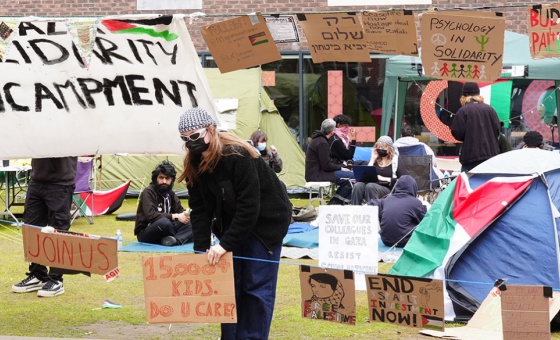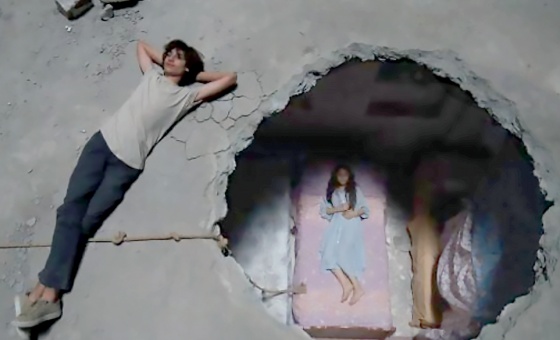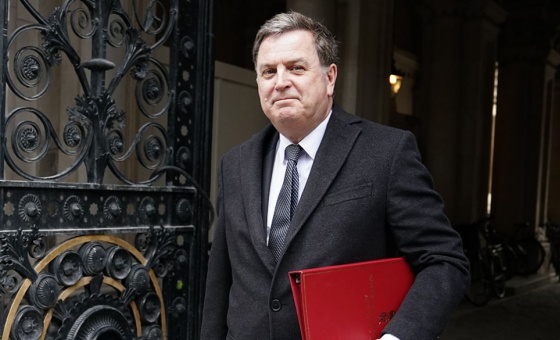This is the last article you can read this month
You can read more article this month
You can read more articles this month
Sorry your limit is up for this month
Reset on:
Please help support the Morning Star by subscribing here
Hogarth and Europe
Tate Britain, London
HOGARTHIAN, like Dickensian, Churchillian (Caryl), and Pinteresque reveal the artist’s status by being an adjective for other art that captures their essence: quite the honour.
William Hogarth is thought to be quintessentially British, London actually, but as the French communard painter Gustav Courbet put it “All art owed more to other art than it ever did to nature.”
Showing Hogarth with his European contemporary painters, for example the French Chardin, Venetian Longhi and Dutch Troost makes an interesting exhibition at Tate Britain, or State (of) Britain as Hogarth depicted, in all the excesses and social contrasts of the day.
The context was mid-18th century colonialism, the rush for markets, alongside poverty and dire social injustice. There had also been an enlightenment and industrial innovations, yet to be working class was very hell.
In this affluent, cosmopolitan and class structured Europe, the seeds of modern empire and global war were being sown. In short, aggressive capitalism, yet the term had yet to be coined (as it were).
Social upheaval always takes art in new directions and this was also a time of revolutionary thinking. But Hogarth, unlike the later Courbet, was no revolutionary. He was an entrepreneurial Tory with great gifts as a painter, capturing the social contrasts with a harder edge than his mainland European contemporaries.
The status of European artists was changing, from the domesticated artisans and court painters to freelancer fine artists, who enjoyed fame and prominence alongside actors, musicians and writers.
There was more personal expression in portraiture, which Hogarth gave a satirical and even moralising edge. If you wanted a rose-tinted flatter piece, Hogarth wasn’t your man. Although he could bring out the individual, sometimes tenderly, as in his famous group portrait Heads of Six of Hogarth’s Servants, 1750-5.
Artistic liberation also came through the development of print. Hogarth could produce his own engravings of paintings, thus eliminating the middleman of the engraver/publisher. So he was “cutting edge” (pun intended) defining his era, juxtaposing extremes of wealth and poverty, and at that time, the disorganised working class.
Hogarth, a humane man, though not necessarily a humanitarian, minded this, and his famous engraving Gin Lane was a propaganda piece supporting the Gin Act of 1751, passed to curtail the consumption of gin by the urban poor.
This is shown in a cabinet next to its companion piece Beer Street – with its happier, better nourished workers getting on with their work, rather than shrieking and throwing babies over the railings.
We see the well-known moralising series of engravings; the cautionary tale of A Harlot’s Progress with country girl Moll Hackabout turning up fresh faced in the city from the country — and last seen in her coffin. It doesn’t end well for these upstarts.
Then the Rake’s Progress where working-class Tom Rakewell lives beyond his birth right, trying to make it as a gent about town, ending up in the madhouse. These asylums were like zoos for the entertainment of the upper classes, there but for the grace of god go I, etc.
The curatorial decision to add politically correct explanatory text next to some of the paintings, I found a tad matronising. Might we need to lie down with smelling salts, were we not reminded that the sexism and racism on display were of their time? And we are now not these people?
In Before and After, the assertive interpretation is made that the painting concerns a rape, rather than allowing the woman “agency” as is suggested in The Lady’s Last Stand, a woman confronting a military officer with his tricorn hat full of gold and trinkets.
Freud would have had a field day.
We look at these works, feeling relief that such social contrast is in the past, but today’s austerity has brought forth many a Hogarthian scenario, with volatile mental health and behaviours, as poverty and insecurity shake the foundation of people’s lives.
The emergence of today’s beggars, addictions and food banks are products of our own economic upheavals, and the exhibition almost begs the question, “who is our Hogarth now?”
As with today’s neoliberalism, there was, in Hogarth’s time, a rising demand for the consumer goods of empire and the new industries. His art didn’t pave the way for a welfare state in the way the later novels of Charles Dickens did, but he did document in paint and fine graphic form, the pre-Dickens era. “Look, this is how it is, rather than what can we do about it?”
Note, this isn’t Hogarth IN Europe – but Hogarth AND Europe. Who knows how he would have voted?
Until March 20 2022. www.tate.org.uk











